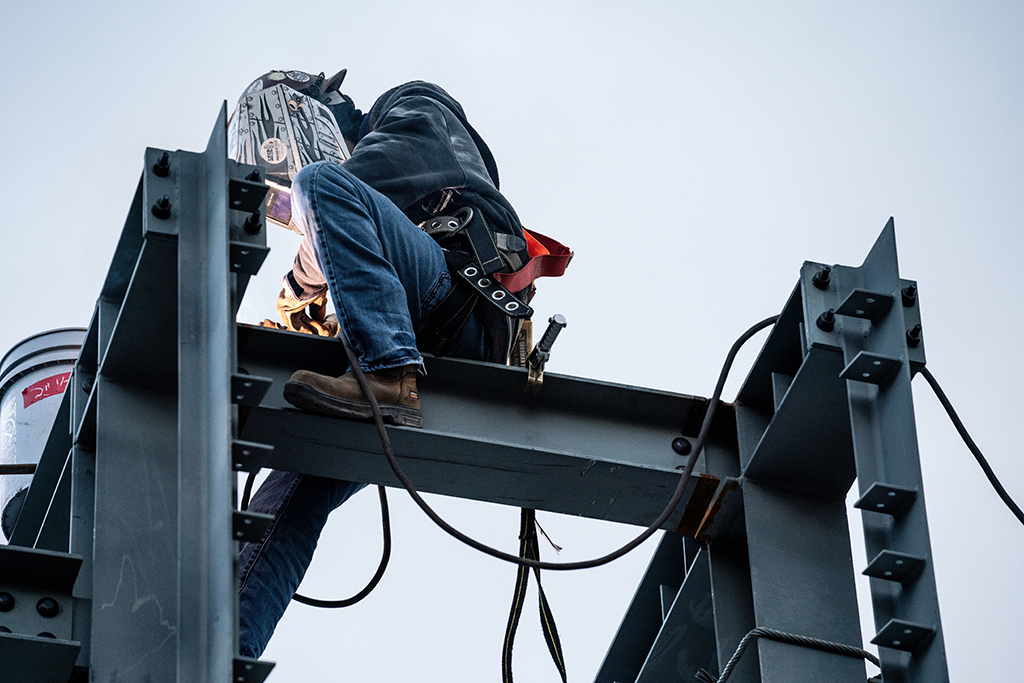
If you stopped by a gas station in the past few days, you probably noticed it costs more to fill up your tank then it did last week. Last year, the cost of lumber shot up and surprised everyone. Right now, we’re experiencing a price surge with steel and historically long lead times for steel products. We are committed to giving our clients, trade partners, and industry colleagues the most accurate, up-to-date information on issues that can impact projects. Here’s what you need to know about what’s going in with the steel industry right now, and how you can protect your project as much as possible.
Price Surge
In the last few months, we’ve seen a more significant price escalation in steel than we’ve seen in the past. At the beginning of the year, a steel fabricator notified me they saw 20% increases in steel prices from the week before. Those prices have not dropped. In fact, the U.S. Producer Price Index (PPI) numbers show in the just the past three months the cost of iron and steel scrap has gone up by more than 50%.
Lead Times
In addition, we are seeing longer lead times than we have ever seen. Just to put it in perspective, a trusted trade partner in the steel business told me that if we placed an order today for deck and joist, what would typically take 8 weeks to be delivered will now take 20 weeks or more. That’s unheard of. Those delivery delays happened seemingly overnight and without warning. As a result, where we would traditionally receive quotes from trade partners that are valid for 30 days, the prices right now in some cases are only good for 24 hours. That is extremely tough to manage or and provide certainty to our clients.
Causes
Obviously the COVID pandemic is a factor in most of the cost increases and material shortages we’ve seen. However, with the impact to steel, I believe the politics, specifically the fact it’s an election year, is a key factor. Prior to the election, the steel industry put a hold on production because of some uncertainty over whether the tariffs on overseas steel would be lifted. If there was an increase in foreign steel coming in, it could saturate the market and cause a surplus in material for U.S. steel manufacturers. Around the same time, there was a big spike in demand in the industry both from construction projects coming back online and from the automotive industry. It was the perfect storm and caused prices to go through the roof and drive lead times back further than ever before. It’s hard to predict how long this will last, but it will take some time for U.S. steel mills to catch up and fill the current demands.
Solutions
The best advice I can offer is to get your commitments made as soon as possible. As I mentioned earlier, bidding your project will be more challenging as prices are so volatile. I suggest hiring your contractor as early as possible, putting them in the same room with your design team, and encouraging them to work together to select materials that are readily available or can be available when you need them. The greatest risk to budgets and schedules is uncertainty. If the market knows a project is real and has a real start date, the pricing and delivery dates will be much better. Uncertainty leads to layers of contingencies.
These uncertain times and factors like increasing steel costs and the lingering high cost of lumber can put projects at risk. If you partner with a contractor and design team who can plan for these factors early, they can help account for them and work them into your design and building plan. Beyond that, make sure your contractor is open and honest and not afraid to have the tough conversations with you, fast. Bad news doesn’t get better with age. When the cost of something goes up or threatens the schedule of your project, you need to know immediately. Our experts stay up to date with the political climate, industry challenges, and current market conditions. Get their latest insights delivered straight to your inbox or visit our resource page to see what they’re sharing.

